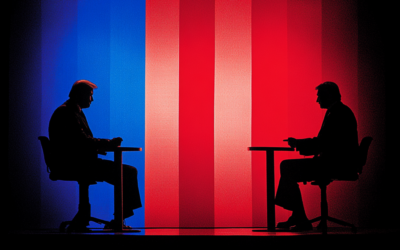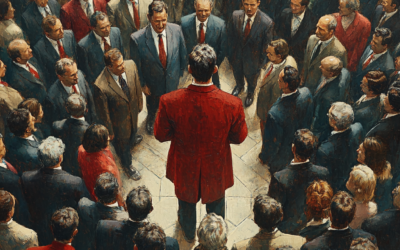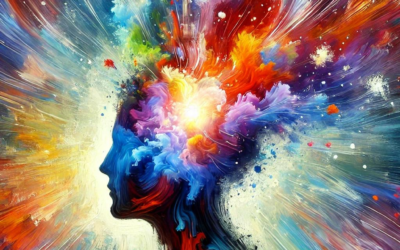In the realm of human psychology, few topics are as captivating and enigmatic as creativity. We’ve long marveled at the ability of certain individuals to conjure up groundbreaking ideas, produce awe-inspiring art, or solve seemingly intractable problems. But what exactly sets these creative minds apart? A recent study published in Brain and Cognition sheds new light on this age-old question, revealing that the secret may lie in how creative individuals process rewards and motivation.
The Unconventional Reward Circuit of the Creative Brain
For most of us, the pursuit of pleasure is a powerful driving force. We’re naturally inclined to seek out activities and experiences that we find enjoyable, and we tend to avoid those that we don’t. This makes perfect evolutionary sense – after all, feeling good about something usually means it’s beneficial for our survival or well-being.
But what if I told you that highly creative individuals might not follow this conventional pattern? The study, led by researchers Madeleine E. Gross, James C. Elliott, and Jonathan W. Schooler, suggests that creative minds may have a unique way of processing rewards that allows them to break free from the typical pleasure-seeking behavior that governs most of our actions.
Decoupling Liking and Wanting: A Creative Superpower?
At the heart of this research is a fascinating discovery: in creative individuals, there appears to be a reduced relationship between “liking” something (experiencing pleasure from it) and “wanting” to pursue it. In other words, creative people might be more inclined to engage in activities or pursue goals regardless of how much immediate pleasure they derive from them.
This finding challenges our traditional understanding of motivation and reward. Typically, we assume that people are more likely to want things they enjoy. It’s why we keep reaching for that slice of cake even when we’re full, or why we binge-watch our favorite TV shows late into the night. But for highly creative individuals, this link seems to be weaker.
So, what does this mean in practical terms? It suggests that creative people might be more willing to:
- Pursue challenging projects that don’t offer immediate gratification
- Explore unconventional ideas or methods, even if they’re initially uncomfortable
- Persist in the face of setbacks or negative feedback
- Engage deeply with complex problems that others might find tedious or unrewarding
This decoupling of pleasure and motivation could explain why many great creative achievements often involve long periods of struggle, frustration, and seemingly unrewarded effort. Think of the countless revisions a novelist might make to their manuscript, or the years of experimentation a scientist might endure before making a breakthrough discovery.
The Neurological Basis: Atypical Salience Processing
But what’s happening in the creative brain to cause this unique approach to rewards? The researchers found evidence of what they call “atypical salience processing” in creative individuals.
In neuroscience, salience refers to how much an item or experience stands out from its surroundings. Our brains are constantly processing vast amounts of information, and salience helps us decide what to pay attention to and what to ignore.
The study revealed that creative individuals showed a diminished neural response (specifically, a reduced P300 event-related potential) to novel or unexpected stimuli in an oddball task. This suggests that their brains might not be as quick to flag certain experiences as particularly noteworthy or rewarding.
This atypical processing could allow creative minds to:
- Remain open to a wider range of experiences and ideas
- Avoid getting fixated on conventional or obvious solutions
- Make unexpected connections between seemingly unrelated concepts
- Maintain focus on long-term goals rather than being distracted by short-term rewards
The Double-Edged Sword of Creative Motivation
While this unique reward processing can be a powerful asset for creativity, it’s not without its potential downsides. The same mechanisms that allow a creative person to persevere through a difficult project might also make it harder for them to know when to stop or change course.
Moreover, the reduced link between pleasure and motivation could potentially lead to:
- Difficulty in enjoying simple pleasures or relaxation
- A tendency to overwork or become obsessed with projects
- Challenges in maintaining work-life balance
- Increased risk of burnout if not managed properly
It’s crucial to note that creativity exists on a spectrum, and not all creative individuals will experience these effects to the same degree. Additionally, this atypical reward processing is just one piece of the complex puzzle that makes up creative cognition.
Implications Beyond the Creative Realm
While this research focused on creativity, its implications extend far beyond the world of arts and innovation. Understanding this unique approach to motivation and reward could have profound impacts on various fields:
- Education: Could we design learning environments that foster this type of intrinsic motivation, encouraging students to pursue knowledge for its own sake rather than for grades or other external rewards?
- Business and Innovation: How might companies cultivate work cultures that allow for the kind of long-term, reward-independent thinking that drives breakthrough innovations?
- Mental Health: Could this insight help us develop new approaches to treating conditions like addiction or depression, which often involve dysfunctional reward processing?
- Personal Development: Might we all benefit from cultivating a more “creative” approach to motivation, allowing us to pursue meaningful long-term goals even when they don’t offer immediate gratification?
Nurturing Your Inner Creative: Practical Takeaways
So, what can we learn from the creative brain’s unique approach to rewards? While we can’t necessarily change our neurological wiring, we can certainly try to cultivate some of these beneficial traits:
- Practice delayed gratification: Try setting longer-term goals and focusing on the process rather than immediate results.
- Explore widely: Engage with ideas and experiences outside your comfort zone, even if they don’t seem immediately rewarding.
- Reframe challenges: Instead of avoiding difficult tasks, try to see them as opportunities for growth and discovery.
- Cultivate intrinsic motivation: Reflect on what truly drives you beyond external rewards or recognition.
- Balance is key: While emulating the creative mind’s approach to rewards can be beneficial, remember to also take time for simple pleasures and self-care.
A New Frontier in Understanding Creativity
This research opens up exciting new avenues for understanding the creative mind. By revealing how creative individuals process rewards differently, it offers a fresh perspective on what drives innovation, artistic expression, and problem-solving.
As we continue to unravel the mysteries of creativity, we may find that the key to unlocking our full creative potential lies not in seeking more pleasure or external rewards, but in cultivating a deeper, more intrinsic form of motivation – one that allows us to pursue our passions and ideas with unwavering dedication, regardless of immediate gratification.
In a world that often emphasizes quick rewards and instant gratification, the creative mind’s ability to decouple pleasure from motivation offers a powerful alternative. It reminds us that some of the most worthwhile pursuits in life – be they artistic, scientific, or personal – often require us to look beyond immediate rewards and find motivation in the journey itself.
So the next time you find yourself working on a challenging project or pursuing a seemingly impossible goal, take heart. That feeling of pushing forward, even when the rewards aren’t immediately apparent? That might just be your creative mind at work, urging you towards discoveries and achievements you’ve yet to imagine.



